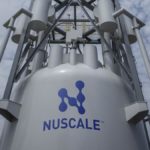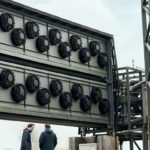
As the most consumed beverage globally, the world quite literally runs on coffee. However, increased hot and dry weather and drought-induced shortages have driven prices higher and are raising concerns over coffee’s future. Luckily there is hope. Scientists and farmers are exploring the economic and environmental merits of shade-grown coffee.
A recent study published in ScienceDirect found that coffee grown in areas with high shade (at least 30 percent canopy cover) had substantially higher biodiversity rates than coffee grown in full sun or with less shade cover. Increased biodiversity may not seem like much to celebrate, but it could change the future of coffee.
Coffee used to be grown in shaded areas that were not totally cleared. But demand has increased—according to the International Coffee Association, global coffee consumption nearly tripled between 1990 and 2020, and current consumption rates are predicted to double by 2050. When coffee hybrids (the outcome of plants bred for both resiliency and flavor) were created in the 1970s that could withstand full sun, producers started clearing more land and growing coffee in full sunlight to speed up the growth process and increase crop yields.
>>>READ: StrawFish: Putting A Unique Spin on Biodegradable Products
For a while, that style of farming was effective. Coffee producers were able to keep up with growing coffee demand since more sun makes for a faster growth process and higher crop yields. But decades later, farmers face two key problems imperiling future coffee crops: soil erosion and a lack of biodiversity.
Soil erosion is a common result of removing tree and plant cover from an area, and it is a problem coffee farmers are facing. As soil erodes, minerals and nutrients that plants need to grow are quickly diminished, requiring farmers to supplement their crops with fertilizers and other additives. Meanwhile, when land is cleared, biodiversity is diminished—birds, pollinators, and other helpful animals only stick around when they have adequate canopy cover. Coffee farmers are now having to use more pesticides and herbicides to deal with the insects targeting coffee plants that birds would have previously eaten.
Shade-grown coffee helps protect soil health, making it simpler for farmers to raise a healthy crop. When coffee is planted under trees (or trees are planted simultaneously with coffee in restoring already cleared areas) the trees can help transfer much-needed nitrogen into the soil through their root systems and leaf litter. Tree roots can also help pull nutrients that crops need from deep in the soil up to the surface. As canopy cover returns, so does soil health.
Birds and pollinators also return when canopy cover is established.The Society for Conservation Biology highlighted this benefit to shade-grown coffee:
“Retaining shade cover on coffee farms helps to preserve insect- and nectar-eating birds. In turn, these species provide important ecosystem services–-that is, free services provided to humans by controlling insect pests and pollinating crops. For example, a study in Jamaica concluded that insect-eating birds benefited coffee farmers by $125 per acre per year by controlling pests.”
The environmental benefits are great. But is shade-grown coffee profitable? Do farmers have reason, other than the environment, to return to this growing method? Yes, it is, and yes, they do.
>>>READ: From Seed to Bottle: How the Wine Industry is Going Circular
The whole point of full-sun coffee was to increase yields and profits for coffee farmers. But with diminishing soil quality and new pest problems, coffee farmers are having to use more and more agrochemicals to achieve the same yields (not to mention increased amounts of labor). A team of researchers from Cornell and Columbia Universities studied different coffee-growing processes in 2019 and concluded that trade-offs make sun-grown and shade-grown coffees similarly profitable. Writing for CornellLab of Orinthology about the research, Gustave Axelson explains why farmers could find shade-grown practices compelling:
“Farmers saved money in supplies and labor costs associated with fertilizer applications, as organic decomposition of leaf litter within a healthy, biodiverse ecosystem provided free natural fertilization of coffee plants. And even though shade-grown coffee is a less-intensive farming operation (there are fewer coffee plants per hectare under shade versus sun-grown farming, and the yield in coffee beans is generally about 30% lower), the lower yields are offset by lower labor and input costs for fertilization and pest control that can be more than $2,000 cheaper per hectare.”
As an added benefit, the slower growth process means shade-grown is considered superior in taste to coffee grown in full sun. A paper published by Nicholas Girkin, an environmental scientist at the University of Nottingham, suggests that the superior taste of shade-grown coffee beans may be due to a lengthened ripening period brought on by slower growth under shade. Multiple studies have demonstrated that researchers are willing to pay more for quality coffee, particularly coffee labeled with different certifications, and farmers could benefit.
If you are a coffee drinker, you have the potential to impact the future of the crop. Coffee certifications such as “Bird-Friendly” and “Rainforest Alliance” on coffee packaging allow consumers to know that their brew is playing a role in creating a demand for more sustainable coffee options.
In a warming world, coffee production is especially susceptible to drought. However, reforms in growing practices and crop management like shade-grown coffee can save the crop, improve the environment, and keep the world caffeinated.
Kelvey Vander Hart is a native Iowan, a member of the American Conservation Coalition, and a communications specialist at Reason Foundation.










